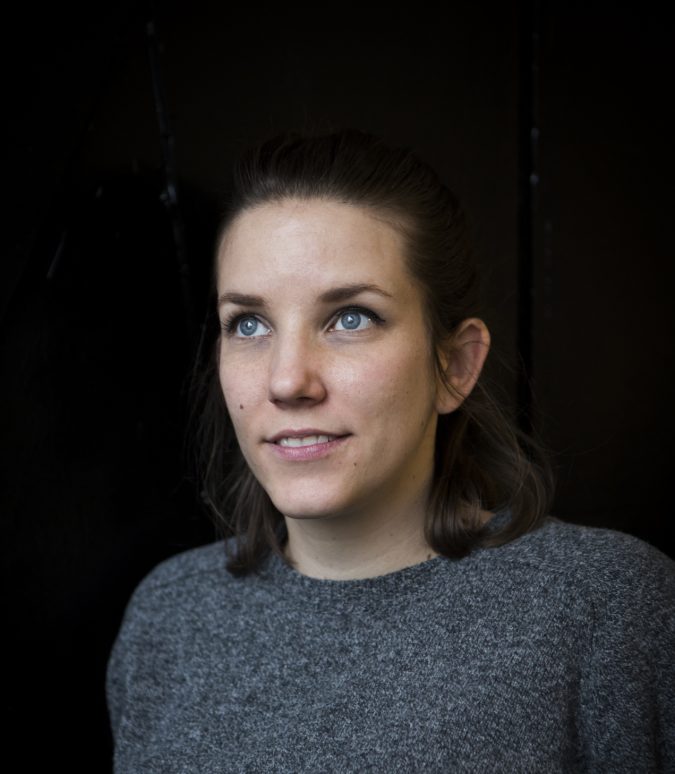Bernadine Brocker is the founder and CEO of Vastari.
“Some of the most sustainable and innovative companies in the art world are led by women”
ArtTactic Editorial is pleased to present a new series of articles highlighting London-based female entrepreneurs in the art world. Our first featured entrepreneur is Bernadine Brocker, founder and CEO of Vastari, a company that connects curators, collectors, producers and venues for exhibition loans and tours.
Bernadine sat down with the Adam Green in ArtTactic podcast earlier this week to discuss the recent publication of Vastari’s Global Report and Exhibition Finance Report. In the Editorial Interview, we asked Bernadine about her journey as a female entrepreneur and focus on how technology can be a tool to help gender inequality in the art world.
1. How is Vastari’s business model disrupting and improving the current state of the art world?
Vastari is the world’s first and only online platform that focuses solely on lending rather than selling art & collectibles. We connect museums with private collectors for loans to exhibitions, and we connect museums with each other to tour their exhibitions. Our business model is innovative because offline brokers of these relationships would take a commission on introductions, but Vastari works on an annual membership fee. This is significant because rather than focussing on big-ticket items, we have the ability to also focus on academically important exhibitions and loans that may not have such high revenues.
Before Vastari, the majority of exhibitions that are successful and tour the world tend to be “blockbusters”. There is definitely a place for these kinds of shows, but we work on everything else, and try to build tools to make sure exhibition producers can be ambitious in their intentions without breaking the bank. I guess if you think about it from economic terms, this will provide a counter-weight to the trend nowadays that all value in the art world is grouped with the top 25 or so artists, and spread the value-increase of exhibition exposure to a wider demographic.
2. What is the most challenging part of being a female entrepreneur in the art world? The most rewarding?
I don’t think I was aware of being an entrepreneur, or female, for a long time while building up Vastari. I was just someone out to solve a problem. In retrospect, there may have been some moments that our company would have been propelled forward more quickly had I been a man in a suit walking into a meeting, but luckily our ignorance meant that this wasn’t a problem we were aware of at the time.
What is challenging is finding examples of women who have been able to balance a working life with their personal lives. Many women drop out of the art world when they have kids, and I think it may be because of unrealistic expectations within our industry in terms of attending events, sacrificing personal time for your work but also an unconscious bias when hiring for senior roles. At Vastari, we’re trying to build a company culture that fosters conditions both men and women can thrive in.
Which leads to the most rewarding part. Since we’re working for ourselves, we can rewrite the rules. Vastari has written up a very fair maternity and paternity leave policy, we try to make sure all panel discussions we organise include women and men, we foster practices to ensure that we do not have a bias when hiring, and so forth. We can try, in a small way, to contribute to changing the status quo.
3. How does technology make Vastari an innovative and dynamic art world business?
We couldn’t do what we do, if it wasn’t for technology. As I mentioned, traditional businesses would work on a commission fee structure to fund their operations, meaning they would have to focus on big-ticket shows and only do a dozen or so every year. With technology, we are able to use algorithms that help us know who should be working together, without incurring prohibitively high costs per match. What is also exciting, is the data that we are bringing together through our tools. As a result of tracking the collaborations between institutions and the private sector, we can highlight gaps in programming, interesting opportunities and potential threats, at scale.
4. How do you see technology helping women entrepreneurs and women artists both now, and in the future?
Some of the most exciting artists working with technologically advanced techniques are women (even though there still is a great focus on male artists in the media). Marina Abramovic created a great experience in VR with Acute VR, artist Liat Segal builds robots that paint or make noise in amazingly huge installations, artist Dr Jasmine Pradissitto uses her quantum physics knowledge to build art in new materials that haven’t been seen before. Some of the most sustainable and innovative companies in the art world are led by women – from Articheck to 1:54 to Subject Matter to Saffronart. These companies make less noise but actually deeply change the way the art world works.

